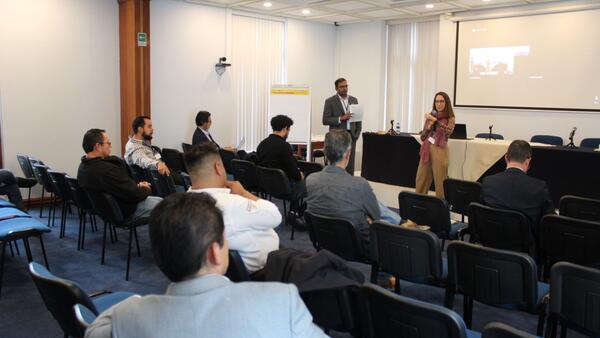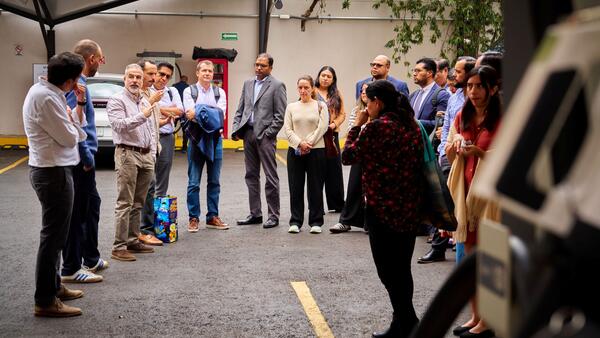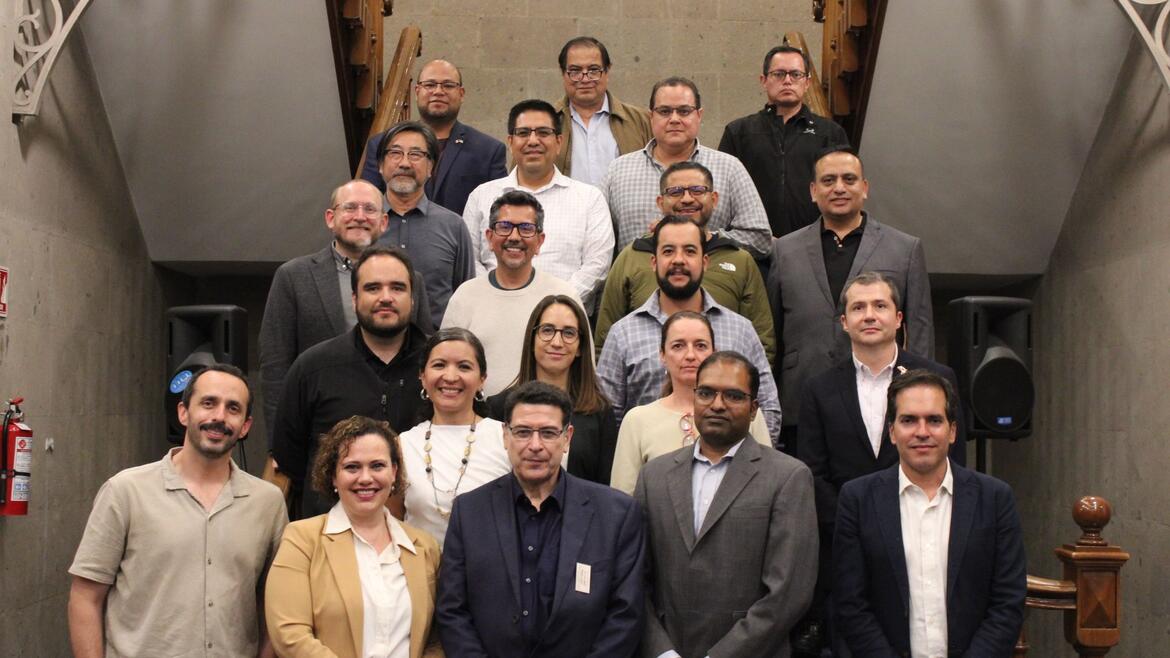CE-CERT Co-Leads Binational Effort to Address Zero-Emission Infrastructure Across California and Mexico
September 29, 2025
California’s transition to clean transportation is gaining new momentum through renewed international collaboration.

On September 17-18, UC Alianza MX and the Mexican Ministry for Science, Humanities, Technology and Innovation (SECIHTI) with the Academic leadership of the Institute of Transportation Studies at UC Davis, hosted the kickoff meeting of the re-established Binational Working Group on Zero-Emission Vehicles (ZEVs). Held at the Casa de la Universidad de California in Mexico City, the event brought together researchers, government officials, and industry leaders from both sides of the border to discuss shared strategies for expanding electric and hydrogen transportation.
Dr. Arun Raju, Associate Director of CE-CERT, was named co-chair of the Infrastructure Working Group, alongside Diana Avalos of the Asociación Mexicana de Impulso al Vehículo Eléctrico (AMIVE). The two-day gathering marked the start of new technical collaboration on charging and hydrogen fueling infrastructure, a critical area where both California and Mexico are seeing rapid growth but uneven implementation. The working group’s primary goal is to develop a joint research agenda to support the transition to zero-emission vehicles. Whether through new standards and regulations, public policy, or infrastructure deployment, the emphasis is on generating research that can inform and guide decision-making. The agenda will explore strategies across freight corridors, urban transit, and rural access—sectors with very different infrastructure needs but shared planning challenges.
“There’s strong momentum on both sides of the border, but infrastructure planning is still a challenge,” Raju said. “There are a lot of moving parts, and no single group has all the answers. This working group gives us a space to connect, compare strategies, and figure out what’s actually going to work.”

In addition to structured group discussions, the event included visits to several active electric mobility projects in Mexico City. Participants toured the VEMO operations center, viewed the TARUK – an electric bus designed and built in Mexico – and explored public transit electrification projects, such as the Metrobus Line 3 terminal at Patio Jupiter. These site visits provided real-world examples of infrastructure deployment and highlighted the role of public-private partnerships in moving from planning to implementation.
The Binational Working Group is organized into three tracks: Infrastructure, Policy and Regulation, and Supply Chains and Markets. Each group is tasked with identifying research and coordination needs that can help accelerate the transition to zero-emission transportation. As co-chair of the infrastructure group, CE-CERT is contributing technical expertise and research leadership to shape a shared agenda for both countries.
“This effort reflects the power of the triple helix—linking the University of California system, Mexico’s federal government through SECIHTI, and the private sector in a shared vision for zero-emission mobility. By aligning research with policy and industry priorities, the group is laying the foundation for lasting binational collaboration in clean transportation. CE-CERT’s expertise and Arun’s leadership make them ideal co-chairs alongside AMIVE to advance a research agenda that is both rigorous and actionable,” says Jail Ixel Cruz García, Strategic Initiatives Engagement Coordinator, AlianzaMX.
The working group will continue its coordination over the coming year, with follow-up meetings, fieldwork, and policy engagement planned. As cross-border freight and energy systems grow more interconnected, the infrastructure track is expected to play a central role in identifying how clean mobility investments can scale on both sides of the border.
